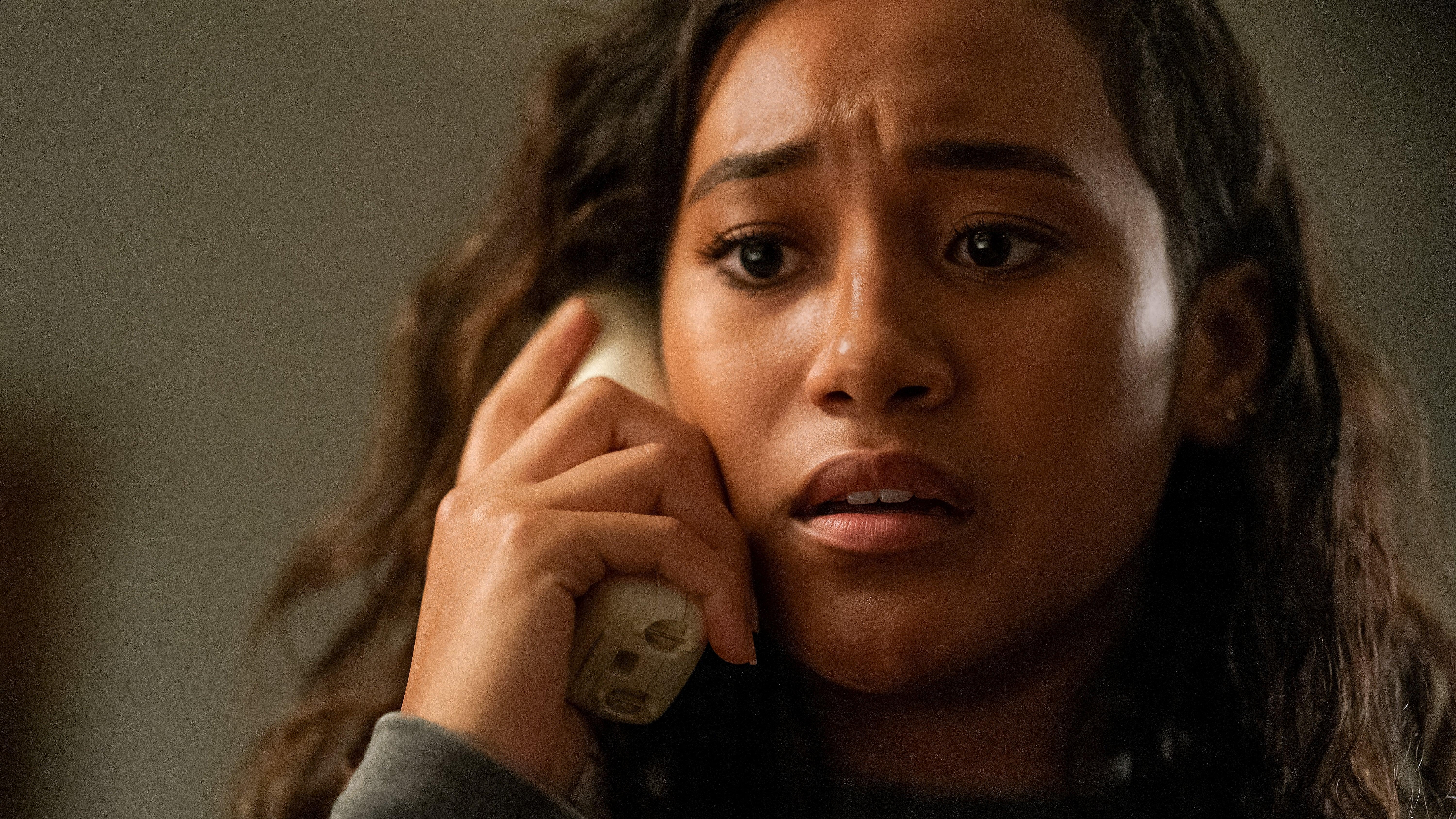There's nothing to get excited about in the Netflix slasher There's Someone Inside Your House
These teens make good company, but the horror movie in which they're trapped is strictly rote.

Surviving a horror movie, according to Scream’s Randy Meeks, requires avoiding “the sin factor”—you can’t drink, do drugs, or (especially) have sex. Any such transgression, however seemingly harmless, serves to define you as impure, qualifying you to be slaughtered by the film’s inevitably faceless killer. Our collective notion of what constitutes bad behavior has shifted of late, however, and Netflix’s rather bluntly titled There’s Someone Inside Your House (oh no!) provides up-to-date reasons for good-looking teens to get slashed and skewered—which is to say, permanently canceled. Homophobic hazing, white supremacy and opioid abuse (as distinct from purely recreational drug use) all rear their ugly heads, giving this example of the genre even more of a moralistic tinge than usual. Why the murderer feels compelled to don a 3-D printed mask of each victim’s own face isn’t entirely clear—nothing about, say, recording a repugnant podcast episode merits symbolic self-inflicted harm—but, hey, it’s a novel gimmick.
Frankly, it’s somewhat novel that Someone Inside—adapted, despite its seemingly algorithm-generated title, from a novel by Stephanie Perkins—eschews ’80s and ’90s nostalgia, taking place firmly in the present day. (Among other modern fillips, the killer texts evidence of victims’ misdeeds to the entire student body.) It’s set in the fictional town of Osborne, Nebraska, to which Makani Young (The Walking Dead’s Sydney Park) has fairly recently moved following some traumatic event that’s left strategically vague for most of the film. A sensitive type who writes poetry, Makani has made plenty of friends among Osborne High’s cool kids, but has apparently told none of them about whatever dark secret from her past she’s harboring. The killer may well know, however, and many of her friends suspect the town’s notorious problem child, Ollie (Théodore Pellerin, devoid of accent but looking as French as his name), with whom Makani’s been having a hush-hush romance for some time. Plus, it just so happens that she’s temporarily all alone at her house, which we have pretty solid reason to fear that someone else may eventually be inside (oh no!).
As a nuts-and-bolts slasher movie, TSIYH (let’s pronounce that “see ya”) has little to recommend it. Director Patrick Brice, known primarily for his Creep series, builds suspense in shopworn ways; his go-to move involves forcing the potential victim into a cramped space that can be repeatedly penetrated by a huge knife. Viewers squeamish about the Achilles tendon will suffer one rough moment early on, but the kills are mostly generic, and the customized face masks too ill-defined to be unsettling.
Like Scream and its sequels, the film also functions as a mystery of sorts, but one to which the solution has been made inadvertently obvious. This ensemble has been conceived in such a way that there’s realistically only one person who could be the murderer, and that’s indeed who it is. The identity of this individual appears to have been altered from Perkins’ book, so maybe its readers will be surprised.
If you’re just in the mood to hang out with some likable teens, however, and don’t mind recycled slasher tropes updated with contemporary sources of outrage, Makani and her friends make decent company. Park has an easy, relaxed vibe reminiscent of the young Jamie Lee Curtis, and pairs well with Pellerin, who’s just the right mix of earnest and squirrelly. Asjha Cooper gets some good sarcastic one-liners as Alex; Dale Whibley makes Zach an amusingly self-loathing rich kid; and Jesse LaTourette, as a nonbinary character named Darby, achieves new heights of mortification when Osborne’s equivalent of a Heather gives an obnoxious, grandstanding cafeteria speech ostensibly celebrating Darby’s courage and fortitude. That this cringeworthy act involves patently phony allyship rather than overt discrimination is by far the film’s sharpest element.
Honestly, it might have been more fun to watch these kids not have their lives threatened. But Fast Times At Osborne High probably doesn’t get the Netflix adding machines a-clackin’.